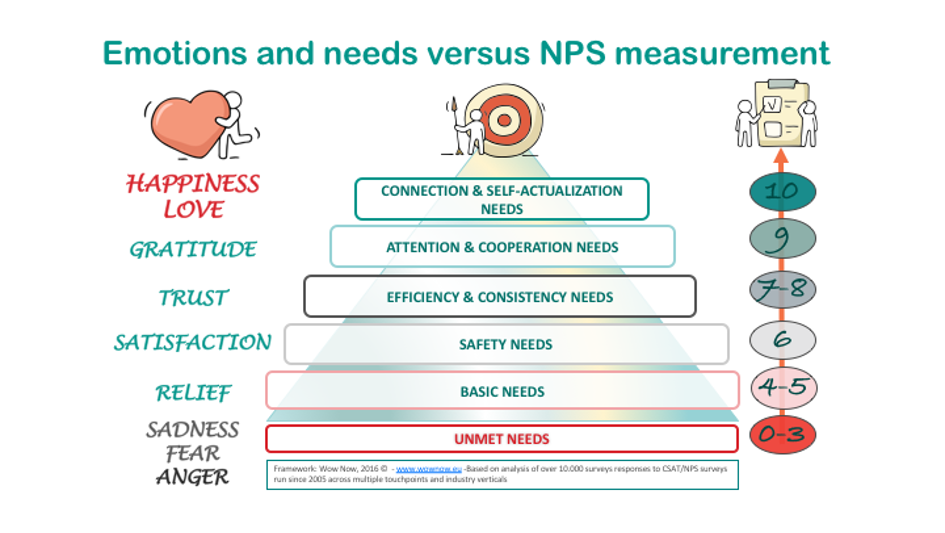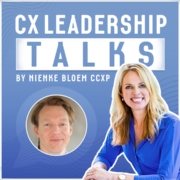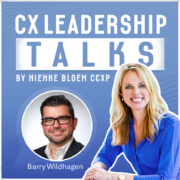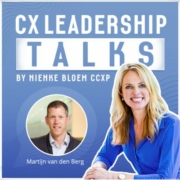CX Framework series #2: Customer Understanding
Understanding your customers Rational and Emotional sides
Customer understanding is essential in determining how you can design and provide products/services and experiences that fulfil customer needs, so you can deliver top-class customer service, improve loyalty and get great recommendations.
It's all about how your customers perceive you and all the interactions with your organisation. Perception being the key element.
Why are they reaching out to your company? How will they feel after being in touch with you? If the customer doesn't have the feeling you want them to have, there's a challenge for you as an organisation.
Foundations of customer understanding: archetypes, emotions & needs
Your customers are not just a number or a bunch of character traits. They are human beings with their own problems, hopes, fears and needs. When making their decisions to buy, customers have both rational and emotional reasons.
Understanding your customers' (buying) behaviour is one of the elements that helps to be successful.
When customers have an emotional attachment to your brand, in addition to being loyal they also become promoters of your brand.
To simplify the understanding of your customers' behaviours you need to consider: Archetypes, Emotions and Needs
A. Archetypes
The Bradford and Bingley Personality Framework identifies four different archetypes:
- The feeler: they make decisions and take actions based on their emotions
- The entertainer: they joke around to make their problems heard
- The thinker: they are rational and process minded
- The controller: they want everything to go exactly as planned and they get worked up when it doesn't
Just imagine the different reaction each of these archetypes may have when entering a hotel room and they smell smoke. Understanding the attitudes of these personalities for example, is critical for your front-end employees (i.e. contact centres or hotel staff) who need to manage these customers' reactions all the time.
While each of us has a dominant archetype, this can change or become extreme, depending on the situation or the stage in which we are in life, especially in case of life changing events like a divorce or the loss of a loved one.
B. Emotions
Many different models are trying to map emotions & make them understandable within companies.
Most of these models identify 4 main emotions: Happiness, Sadness, Anger and Fear.
Recent Temkin analysis of these 4 emotions at call centers proved the impact of these emotions on call duration!
This model is good and widely recognized, yet has limitations with regards to two essential elements:
- Tends to perceive emotions as positive versus negative (on a ratio of 1-3)
- Misses out completely on the fundamental human emotion: love
Rosaria Cirillo has applied her learning from Marshall Rosenberg NVC (Non Violent Communication) and showed us how we can instead distinguish emotions in two broad categories:
- The ones we feel whenever our needs are met (i.e. happiness and love)
- The ones we feel when our needs are not met (i.e. sadness and fear). When customers are expressing sadness and/or fear and their emotions are not acknowledged or understood, or when they feel judged, this can turn into anger.
 C. Needs
C. Needs
To be able to understand and influence which emotions the customer is feeling, we need to have a clear understanding of their needs.

The trainer Rosaria Cirillo shared how the analysis of thousands of survey responses she analysed – run since 2005 for different companies across multiple touch points and industry verticals – shows that an adapted version of Maslow's hierarchy of needs could be applied. There was a clear correlation between CSAT/NPS Score and at which level of needs the customer felt fulfilled during the interaction. In the most recent year she has added the emotions to the model as we can see in this figure.
Another way to look at needs is to consider the value you deliver to your customer like explained in the Elements of Value Pyramid from HBR's The 30 Elements of Value.
Setting up a customer insight framework to systematically understand your customer
To have a proper understanding of who your customers are and how they want to be treated by your organization, you need to have a reliable customer insight program. You can achieve this using the following 4 steps:
- Collect data:
- Listen to the Voice of the Customers by asking feedback, performing voice analysis of incoming calls and making sure to 'drink your own champagne' i.e. being your own customer.
- Listen to the Voice of the Employees. What are they working on that isn't giving them any satisfaction? How can you make their job more fulfilling?
- Listen to the Voice of the Process. How are your processes aligned and do they add value to the customer? Do you use Lean Six Sigma or another methodology?
- Look at the Value of the Customer. Quantify your customer by revenue, size or any other metric.
- Analyse your data. What do they mean and can you find any correlations or associations?
- Document the data and make it visible and understandable. Customer journey maps and personas are two key tools that can make your insights visible and easily understandable within your organization.
- Share your insights within your organization. Make sure everybody knows how the customer feels and how they can change their service or tone of voice accordingly.
Emotions drive loyalty and higher customer spending
When you're reading this, you might be tricked into thinking that customer experience is only about making the customer happy and it doesn't affect your revenue. Far from the truth! Numerous studies have concluded that a customer is more loyal to an organisation when they have a positive feeling about how they've been treated. For example: when a customer has a very positive feeling about an organisation, they are 7.8 times more likely to try new products and services. Think about the possible impact this could have on your P&L!
Getting in touch and staying in touch with your customer
The easiest way to get insights in the actions of thousands of customers is by analysing your website visit data or by looking at a chart of your contact centre volumes by contact reason (Check Tip: do you have such an overview in your company and, if so, who is looking at it regularly taking which actions?). Downside is that in doing so, you're changing your customers into numbers or segments and you might forget that they are individuals. To compensate for this, numerous big companies make actual contact with customers mandatory for their employees, either by listening to calls, either by calling customers regularly either by acting as customers themselves.
The NS (Dutch Railway) asks their employees to travel by train regularly. That way they can sense the sentiments of passengers and get a stronger focus on ways to improve the journey for the customers. Likewise, the CEO of KPN (Dutch telecom provider) has a mobile phone subscription just like everybody else, so he can feel what it's like to be a customer of his own company. Other organizations facilitate Customer Arenas where few employees listen and observe a group of customers while they discuss among themselves how they are treated and how the organization could improve. All these initiatives give great insights and should be incorporated in every organization that wants to deliver better customer experience.
Understanding your customer is crucial when it comes to customer experience. Listen, observe, get a deeper understanding of their emotions and their feedback, then you'll make a good start!
Want to grow your Customer Experience competences?
These are only some of the highlights Milou took away from attending the Customer Experience Masterclass. Would you like to know more? Join a CX Masterclass.
Customer Experience Framework and complete list of blog posts in this series
This post is part of a wider series about all the 6 CX disciplines that represent the CXPA Framework around which the CCXP exam is structured and that we cover in the CX Masterclass.
Find here the complete list of the other posts in this series:
- CX Strategy
- Customer Understanding
- Design, Improvement and Innovation
- Measurement
- Governance
- Culture
Extra: CXPA exam & Becoming CCXP (will be published on the 11th of December)
About this series
This post was originally posted on Wow Now and is part of the CX Framework series by Rosaria Cirillo and Nienke Bloem.
The foundations for these blogposts are written by Milou van Kerkhof following the June 2017 CX Masterclass given by Nienke Bloem and Rosaria Cirillo. Milou attended this as a newcomer in Customer Experience. These blogposts have been slightly edited and reflect only the highlights of the content of each module
*****
Nienke Bloem is often called the Customer Experience speaker in the blue dress.
She's a global CX thought leader, educator and a global keynote speaker who inspires audiences with best practices and proven methodologies. She leads a speaking practice, a CX game company and a training business; she breathes Customer Experiences and is author of two CX books.
Her two-day Customer Experience Masterclass is known as the best program to prepare for your CCXP and she is the go-to person for CX leaders who want to advance their leadership and bring direct results from their Customer Experience transformation programs. Since 2020, she hosts a CX Leadership Masterminds program and helps leaders spice up their leadership and deliver an engaging CX Story including a solid CX Strategy. Besides, she is a modern-day pilgrim and found the parallel with leading customer centric transformations.
With her over 20 years of corporate experience, she speaks the business language. Her keynotes and education programs in Customer Experience are inspiring and hands-on. She is one of the few Recognized Training Partners of the CXPA and it is her mission to Make Customer Experience Work and help you deliver business results.









